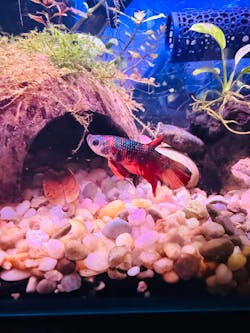
Male Betta Fish
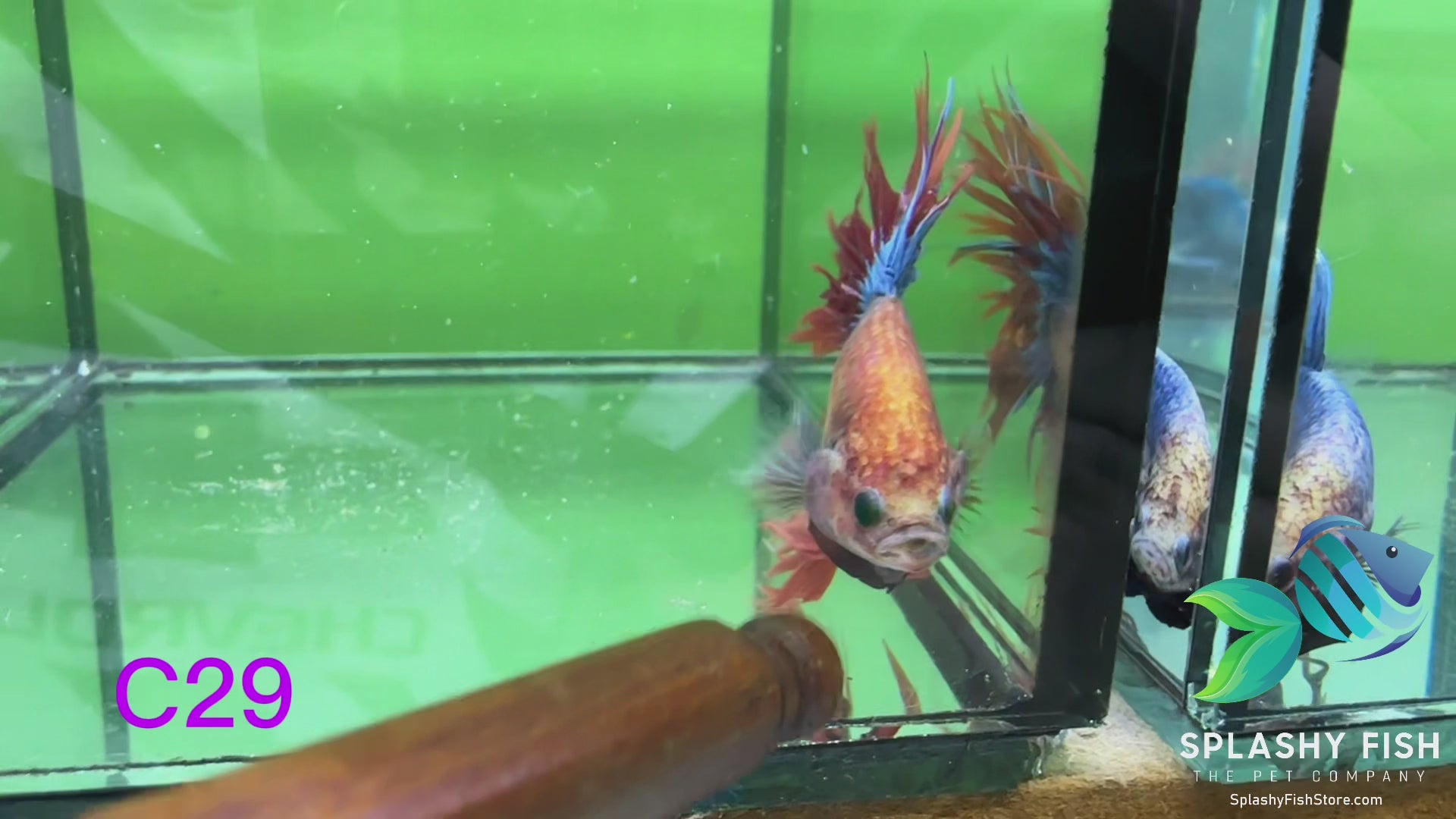
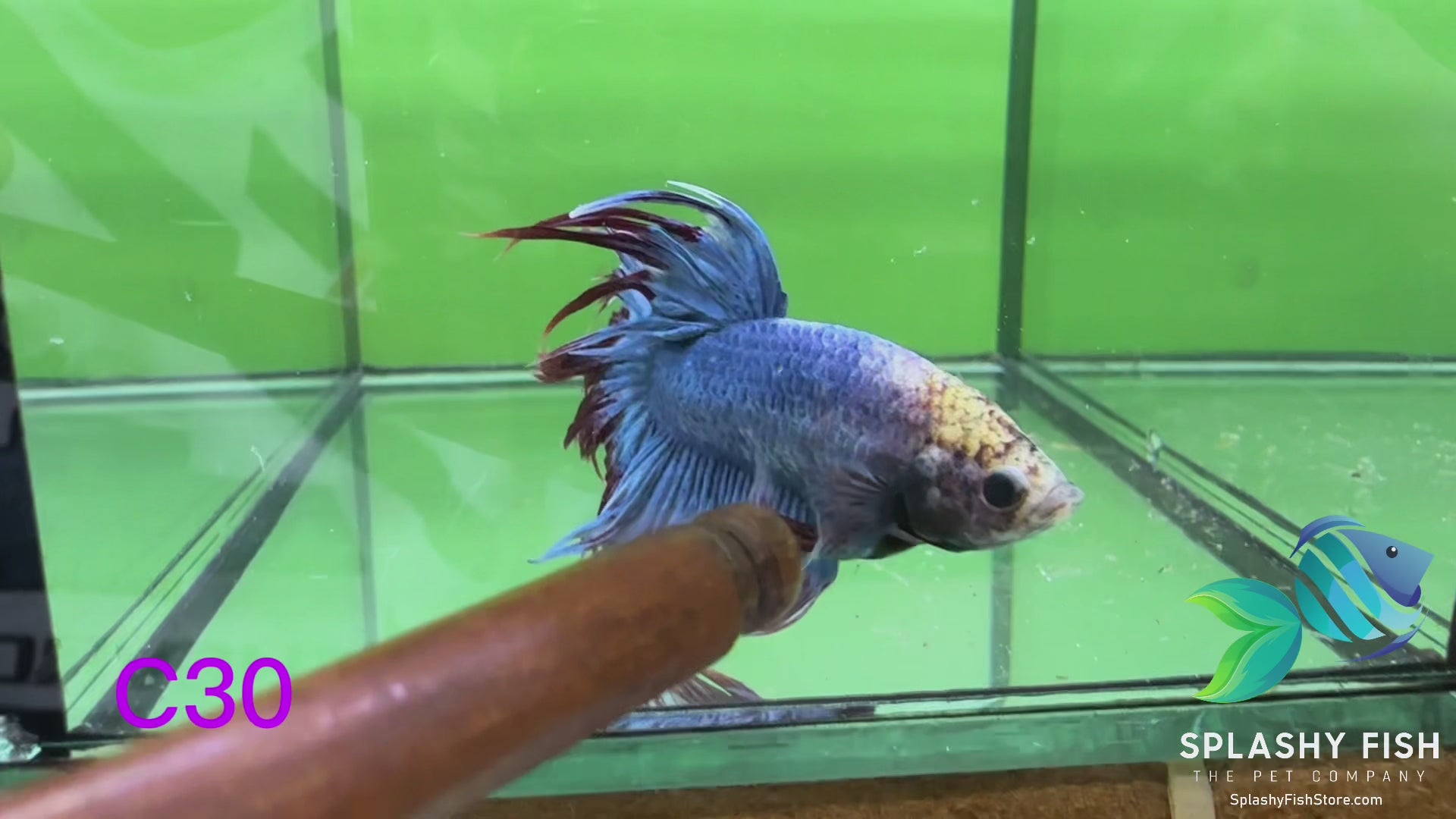
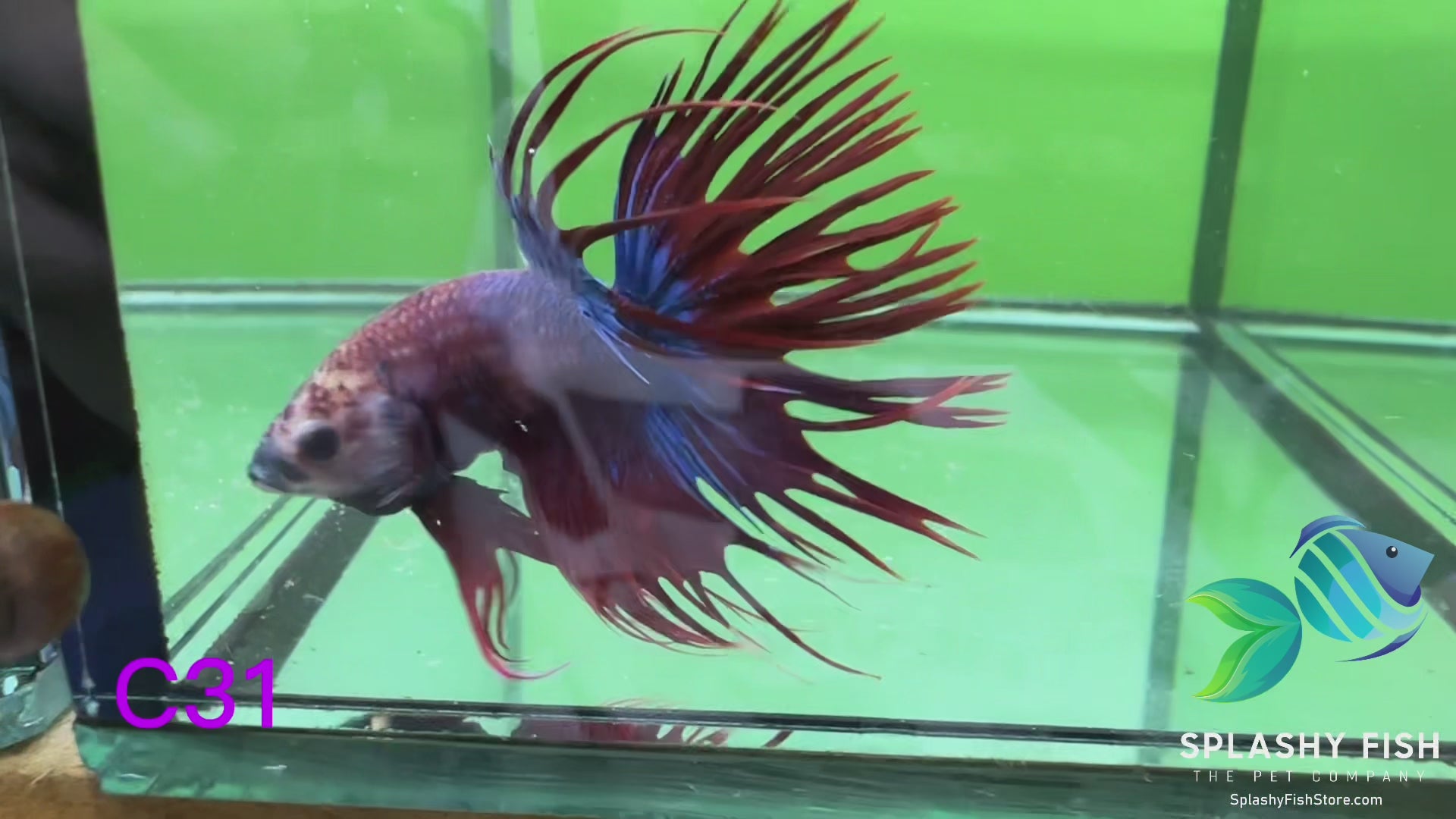
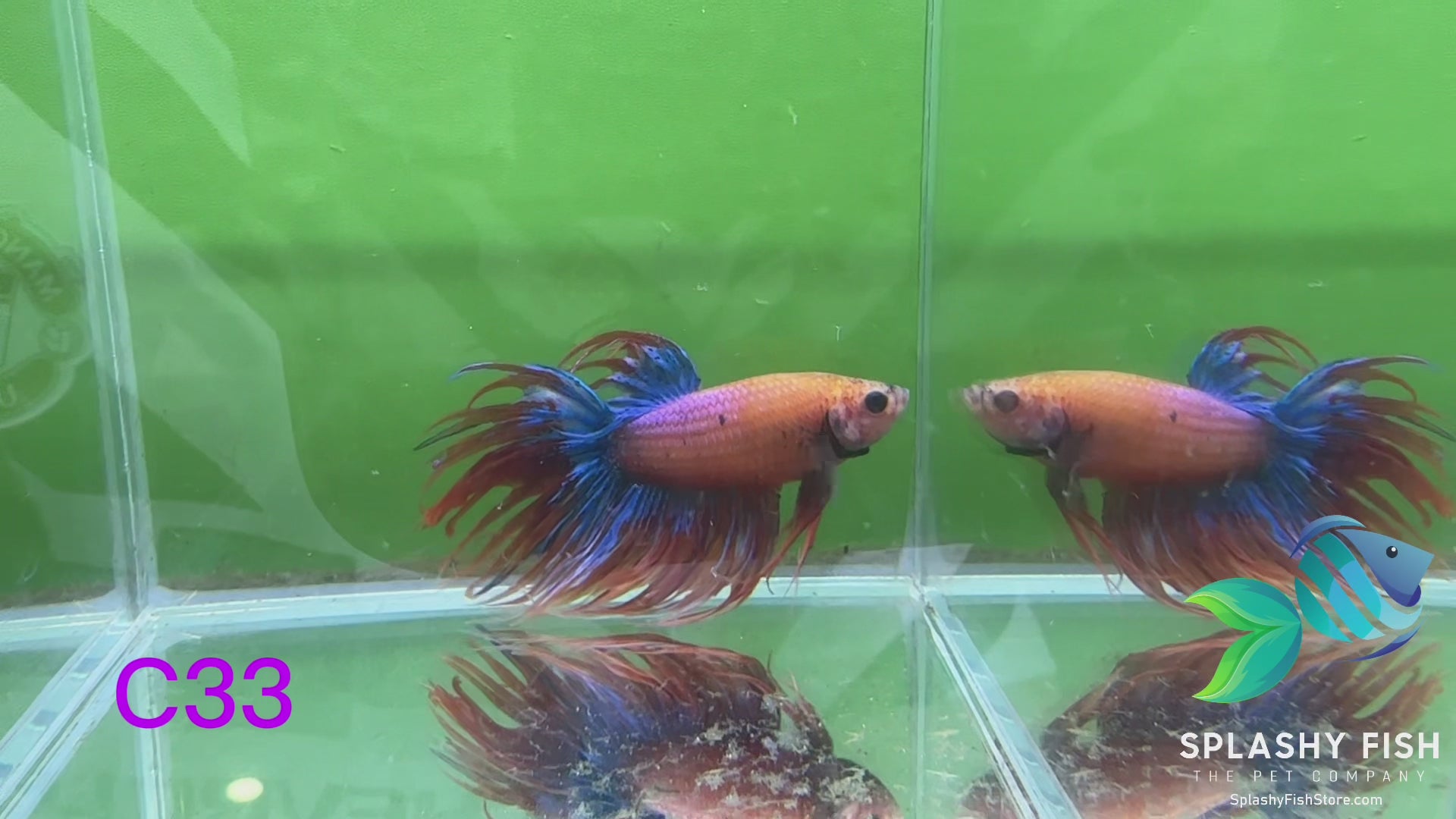
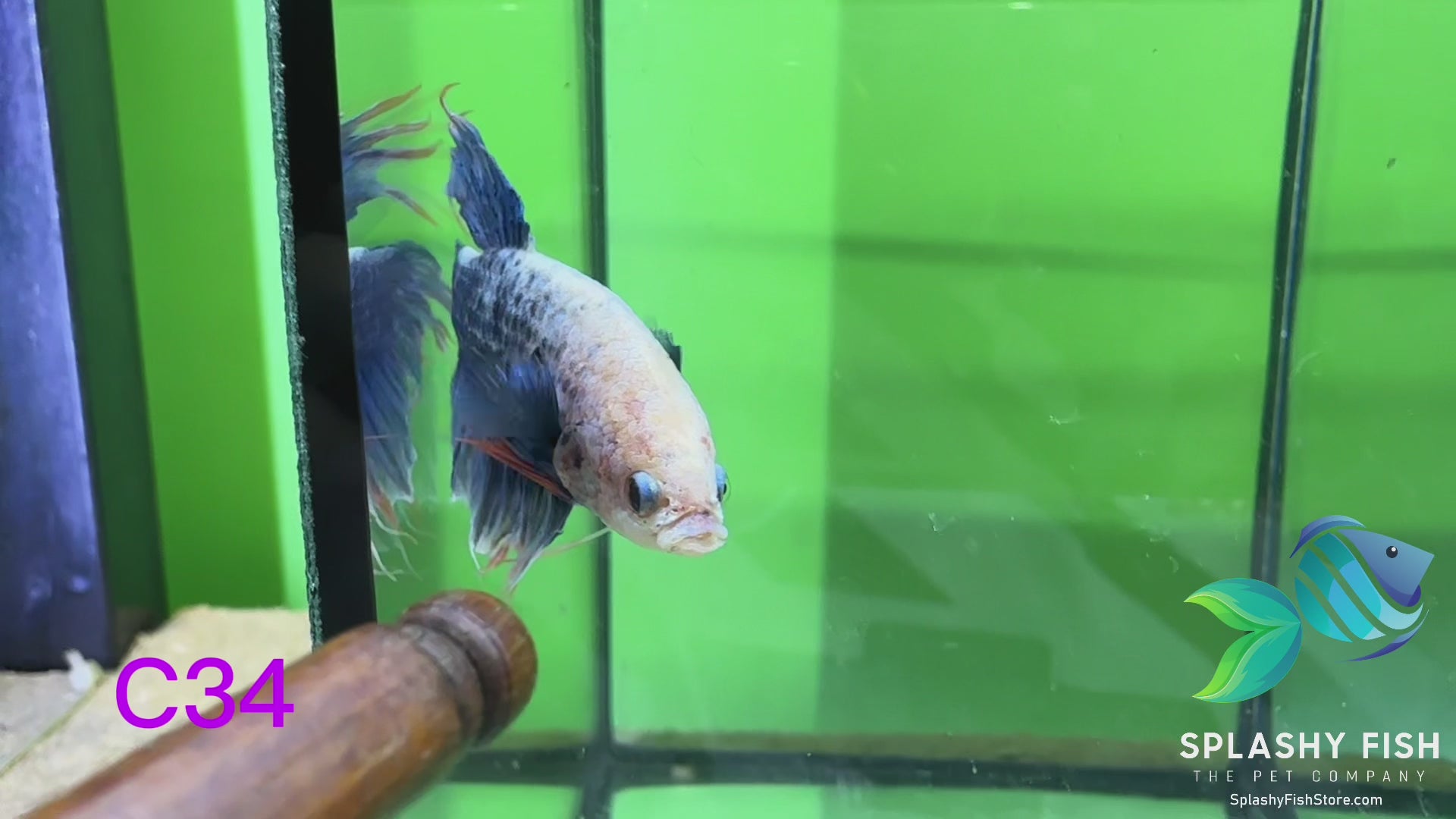
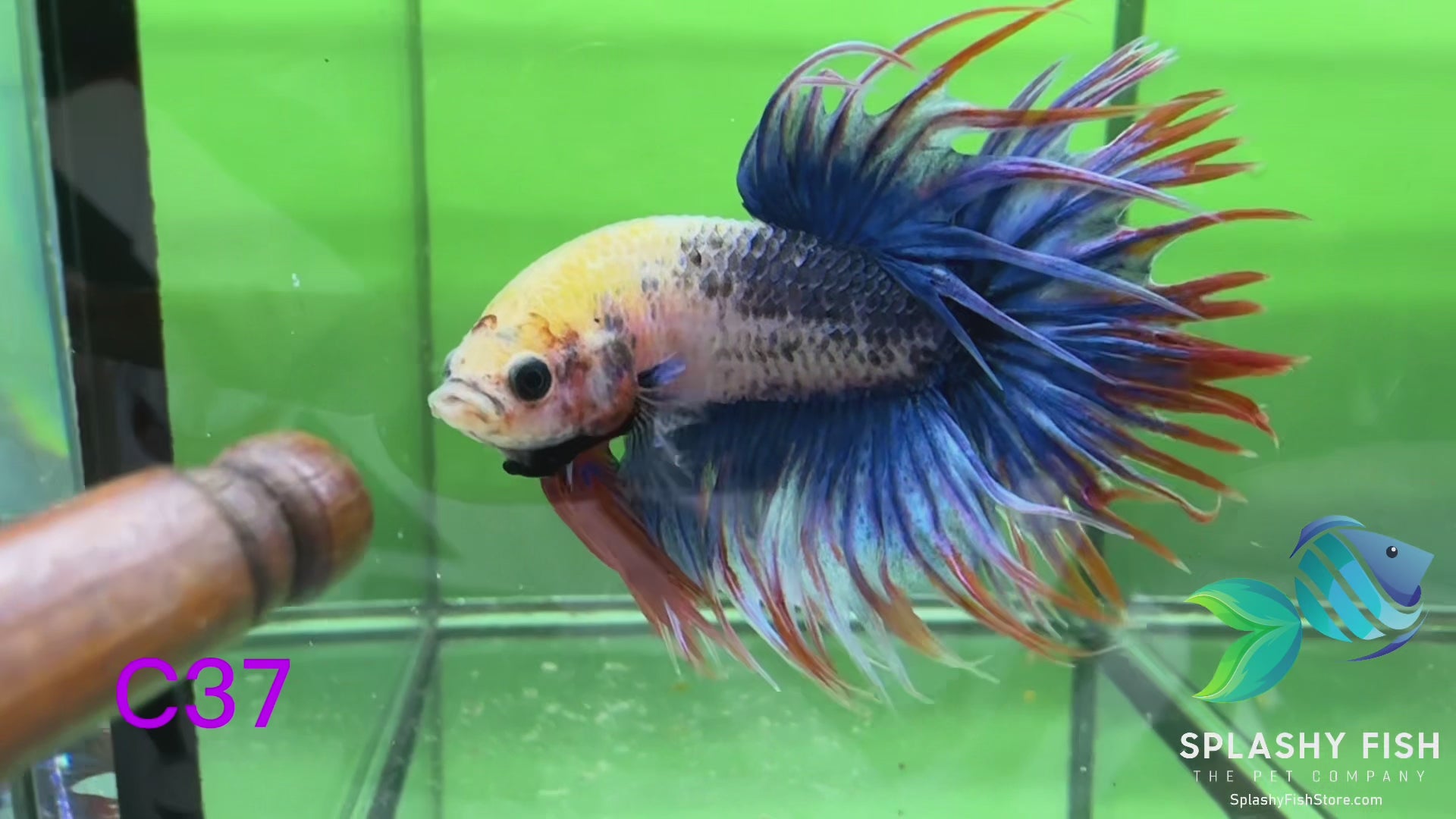
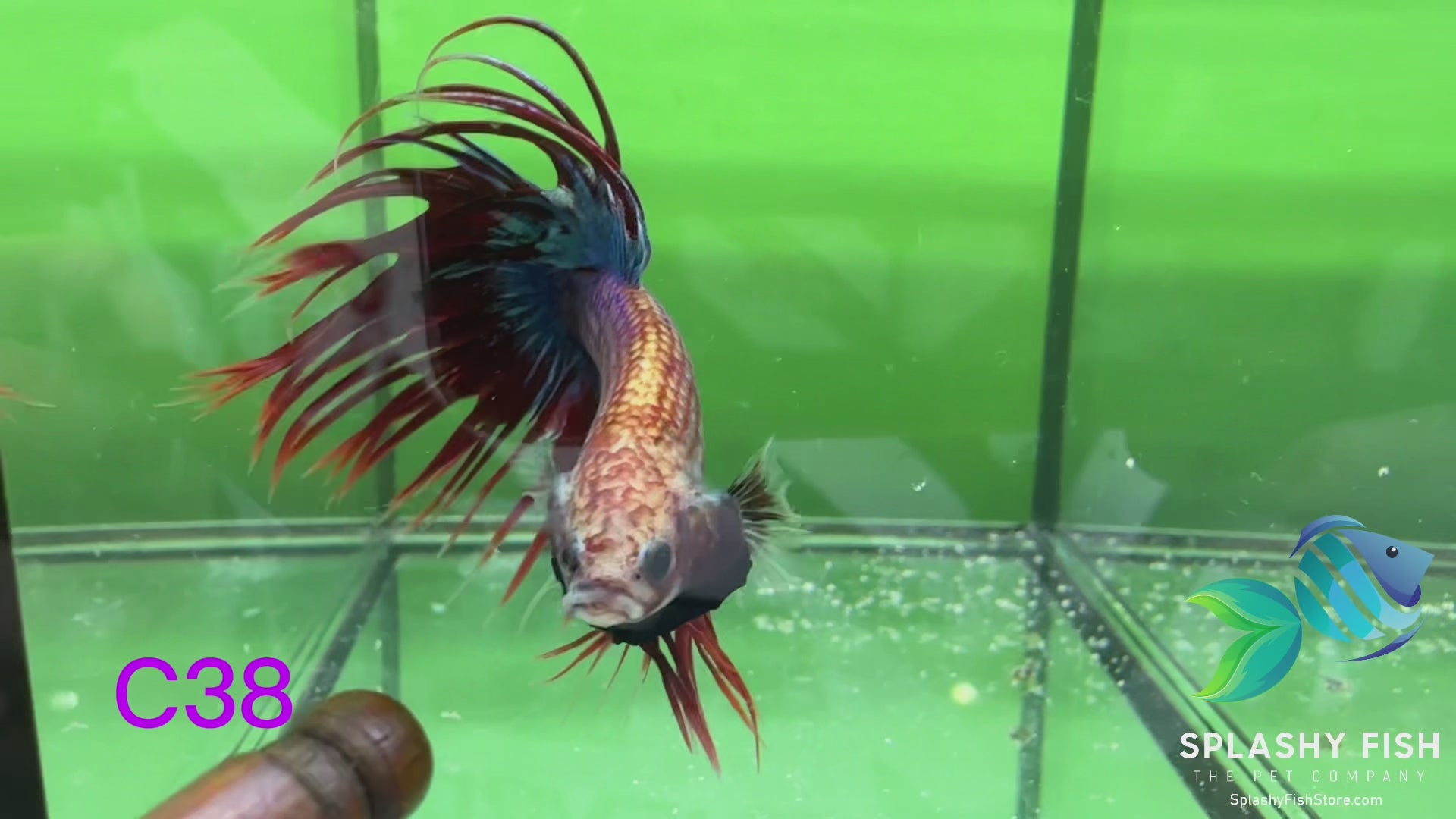
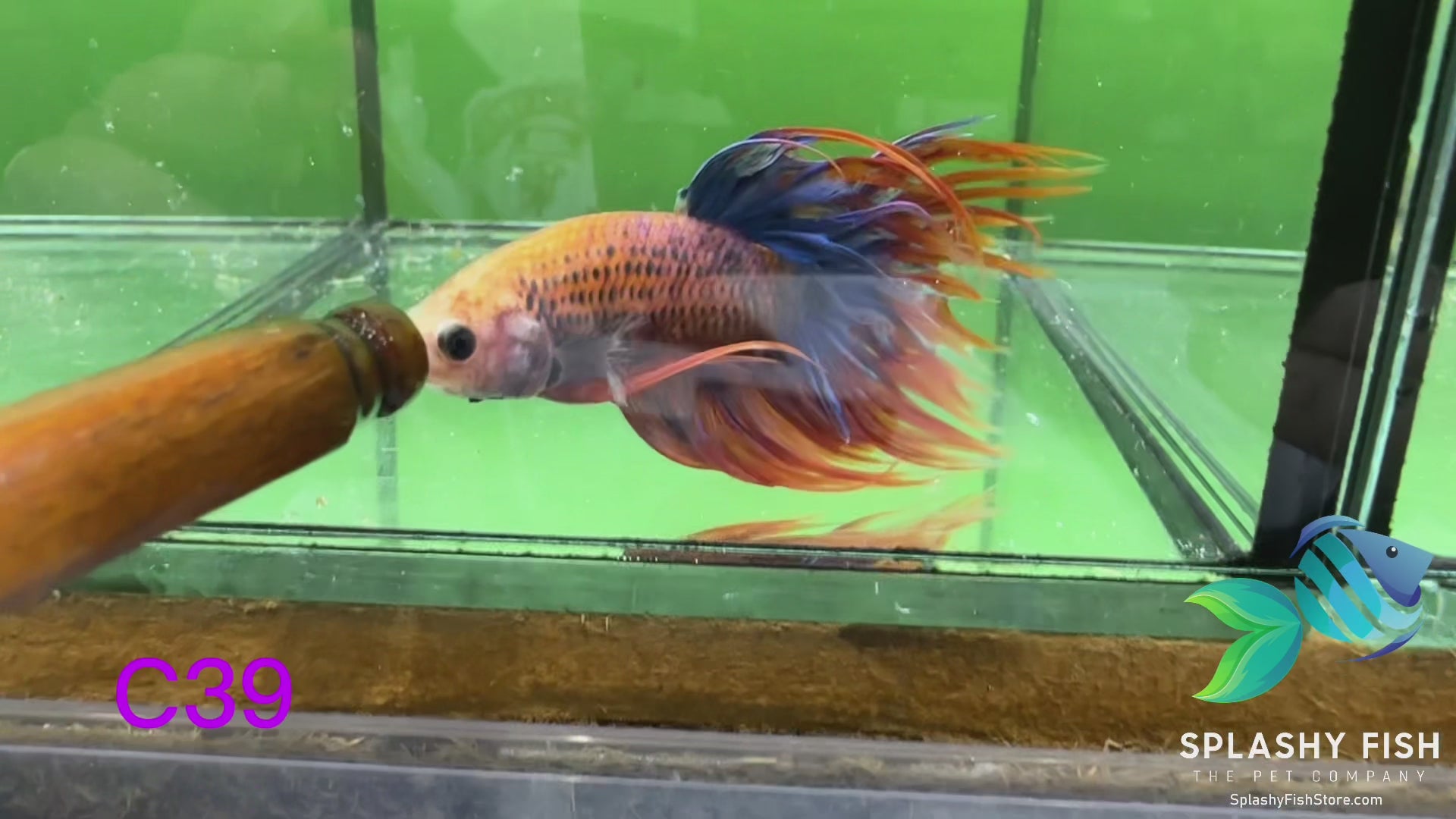
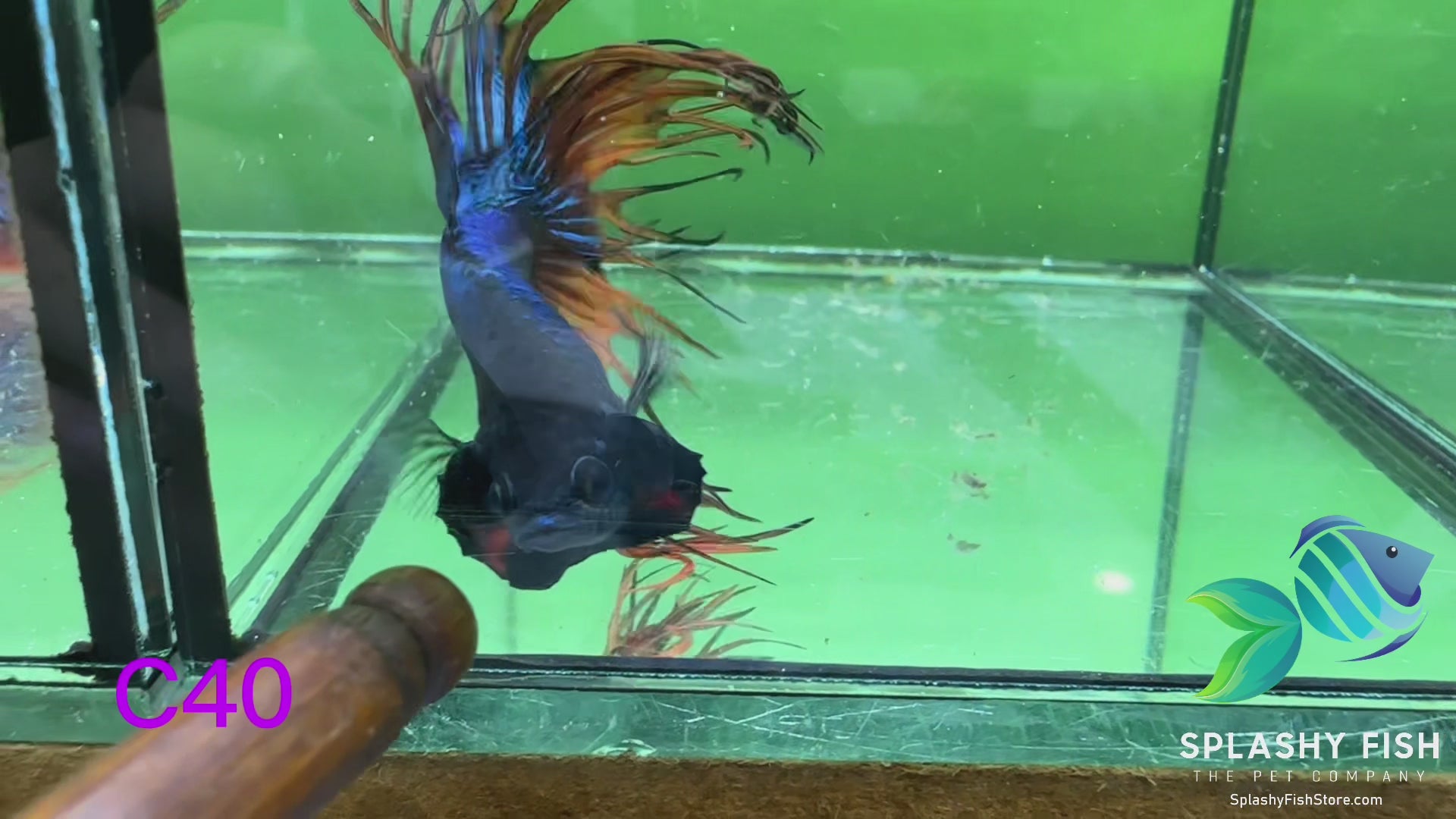
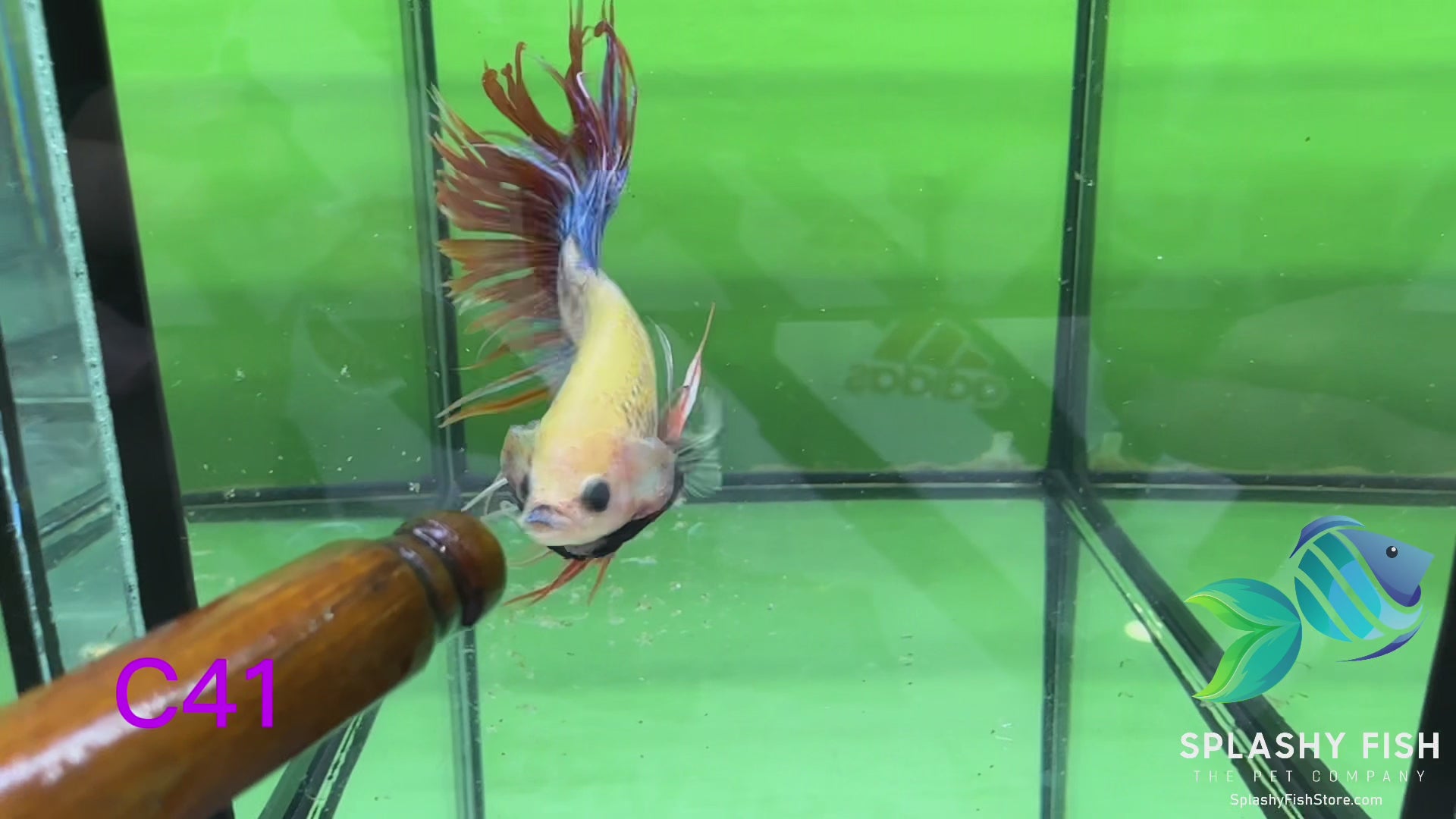
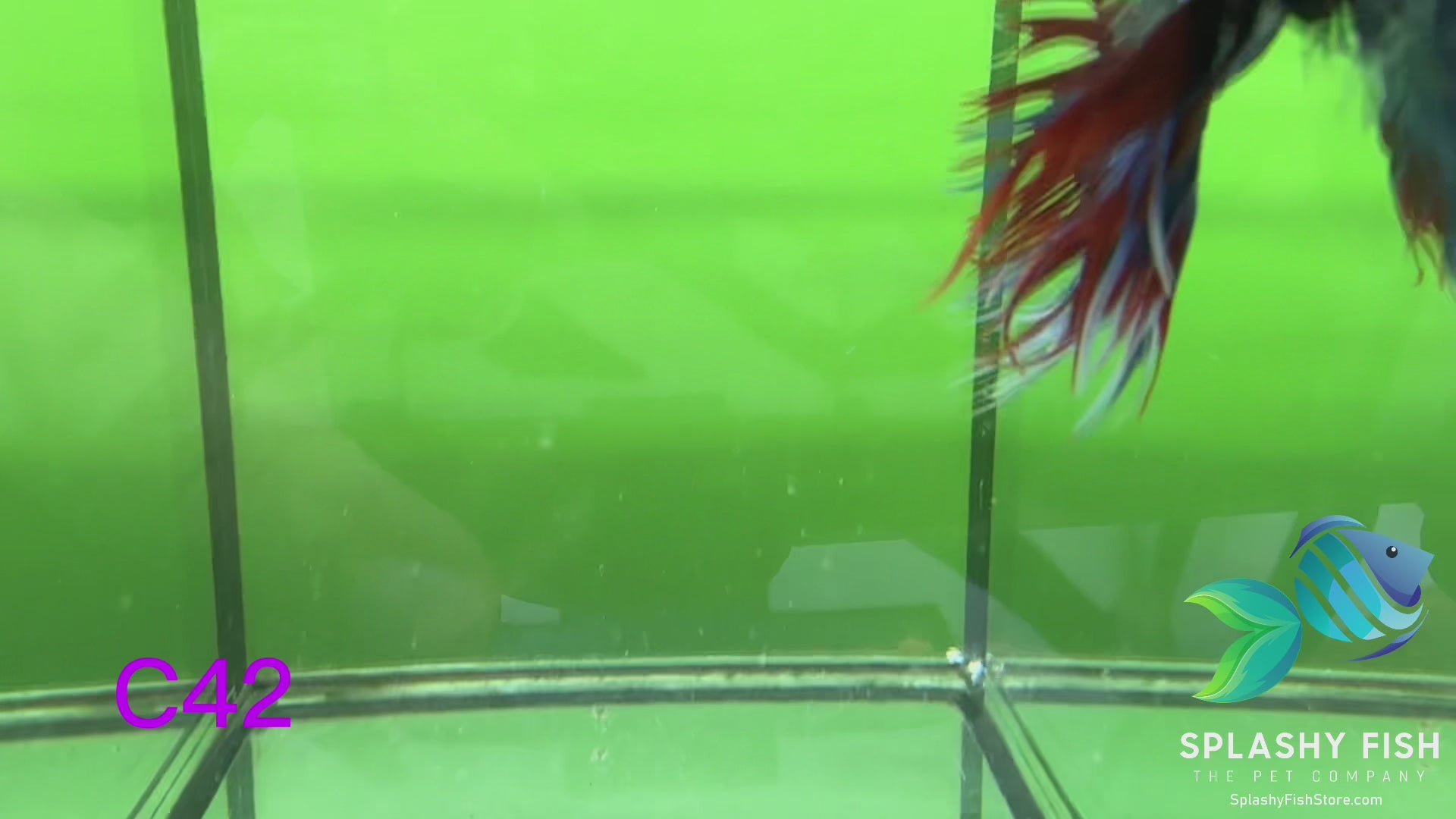
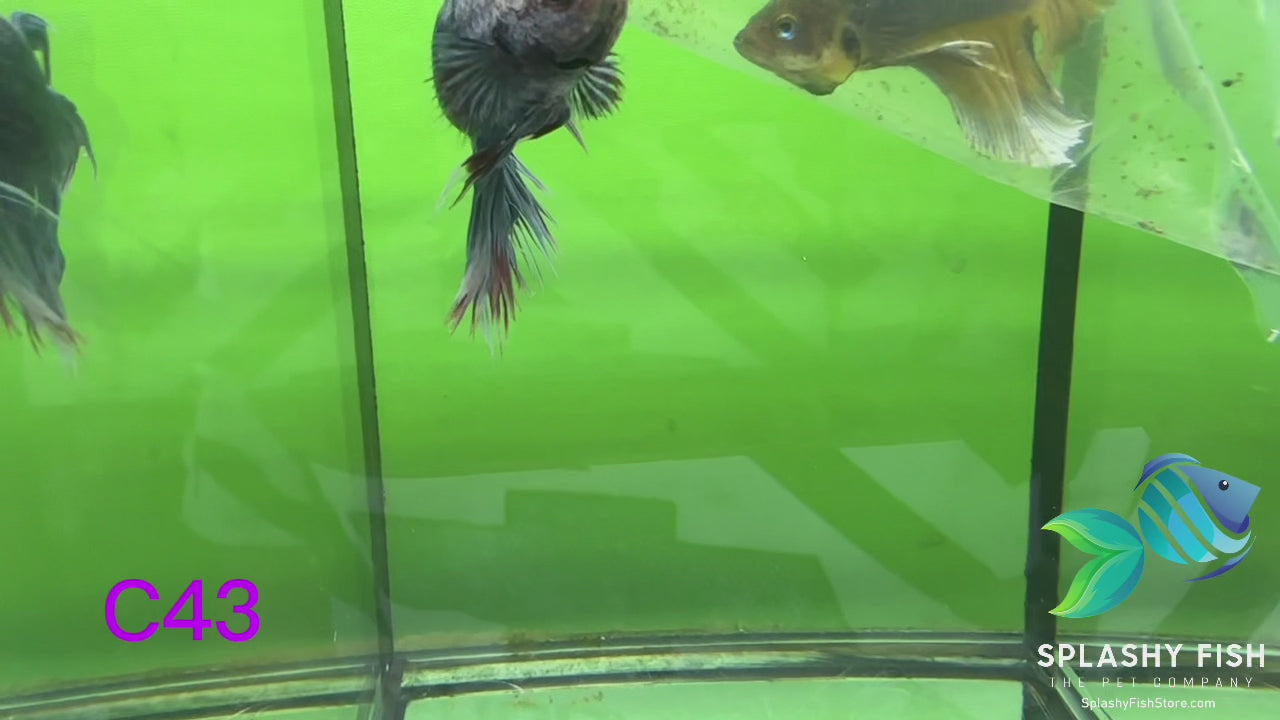
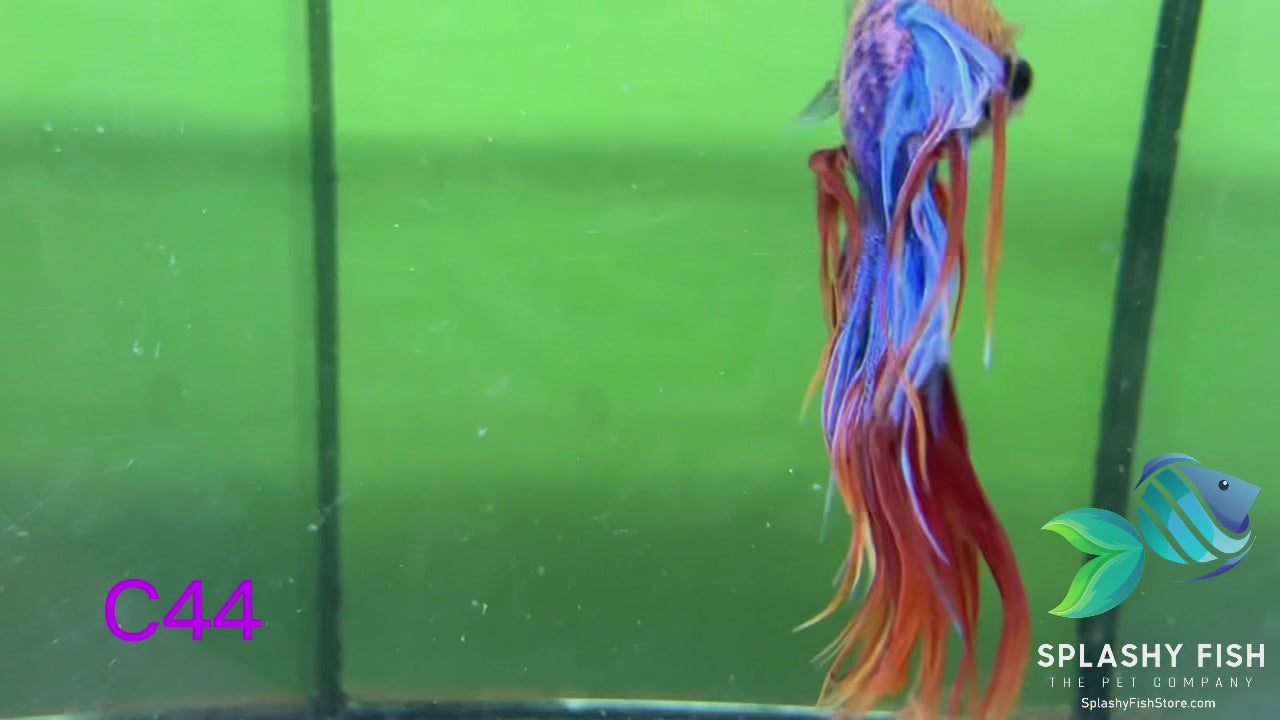
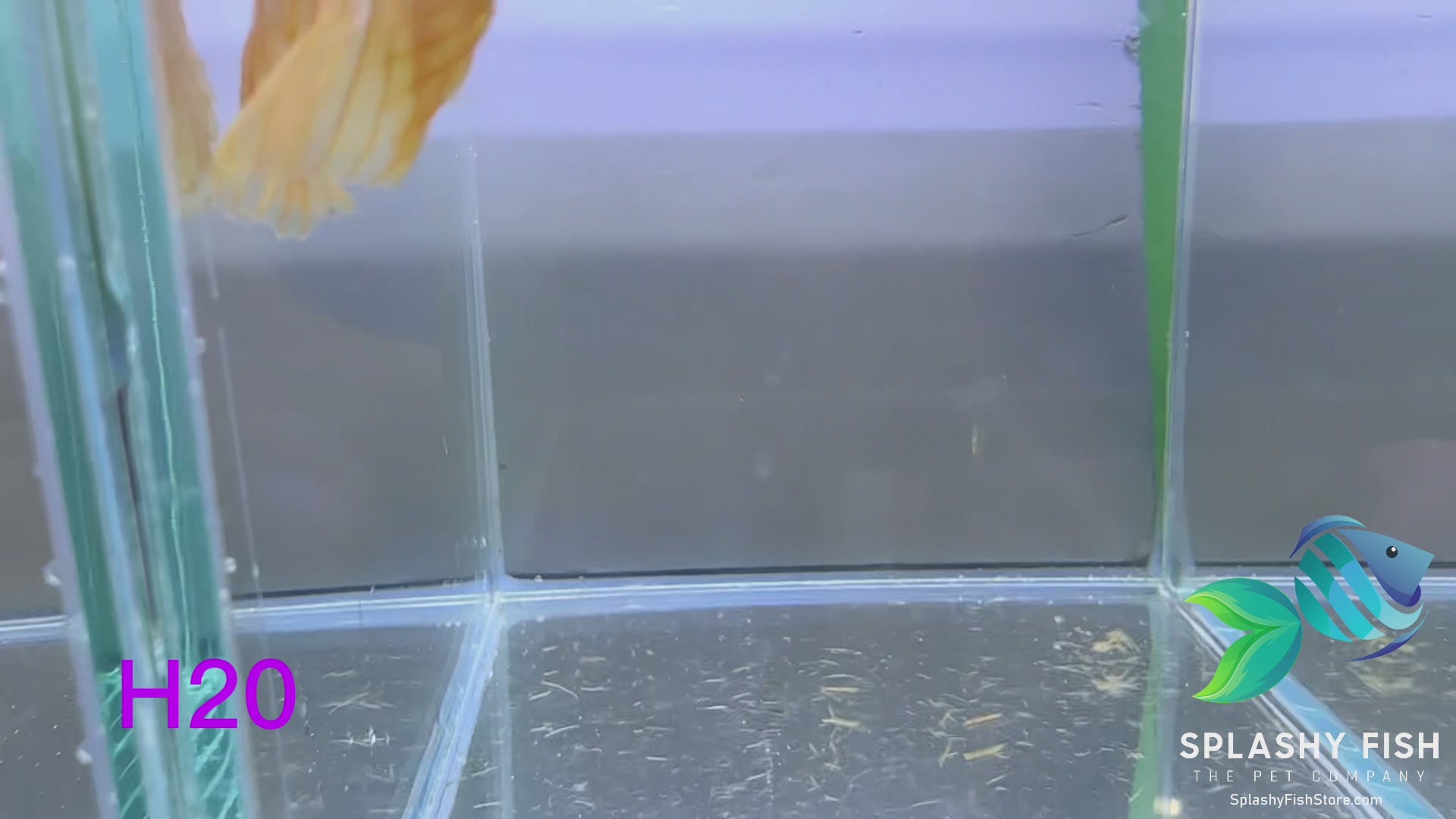
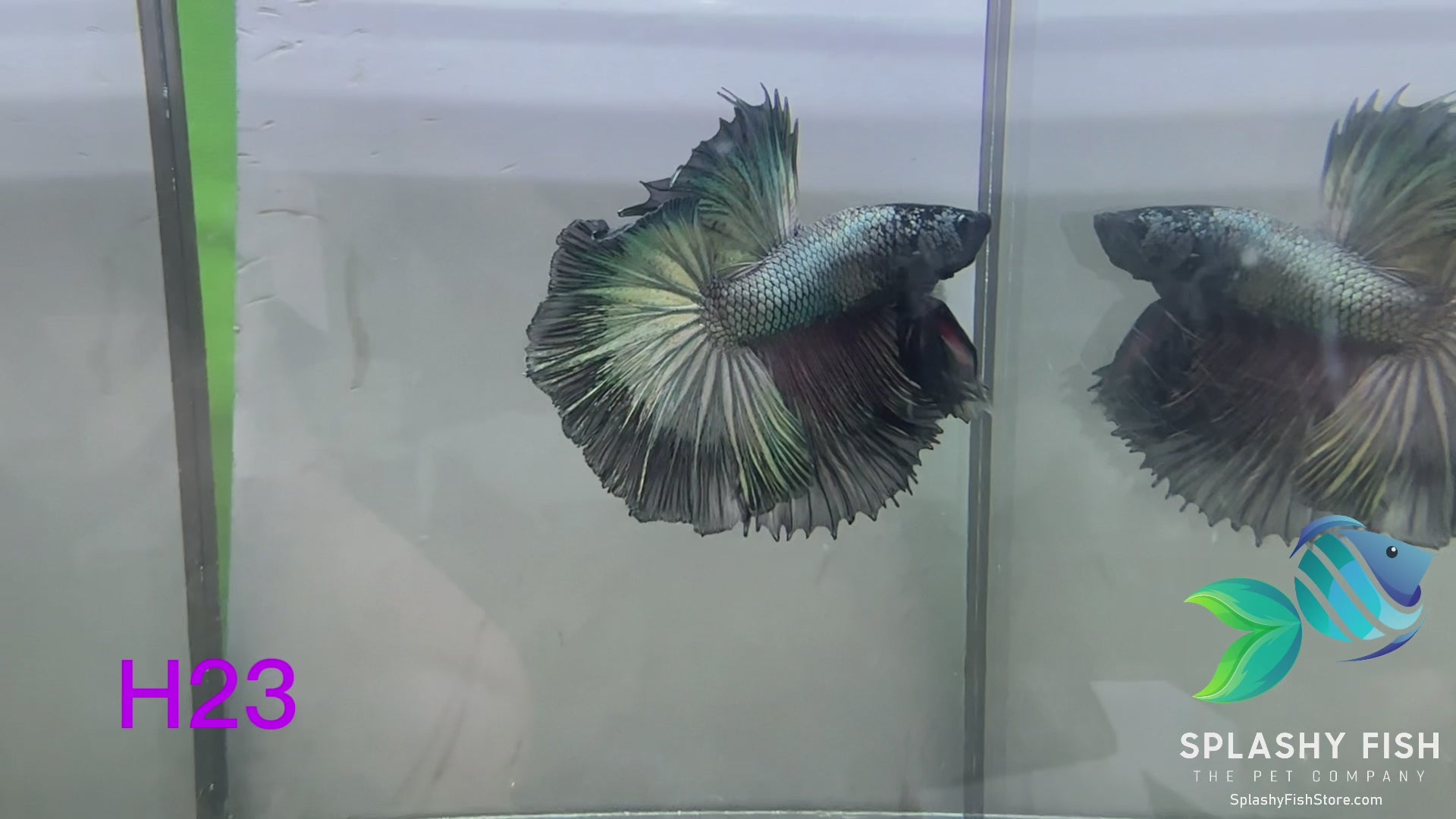
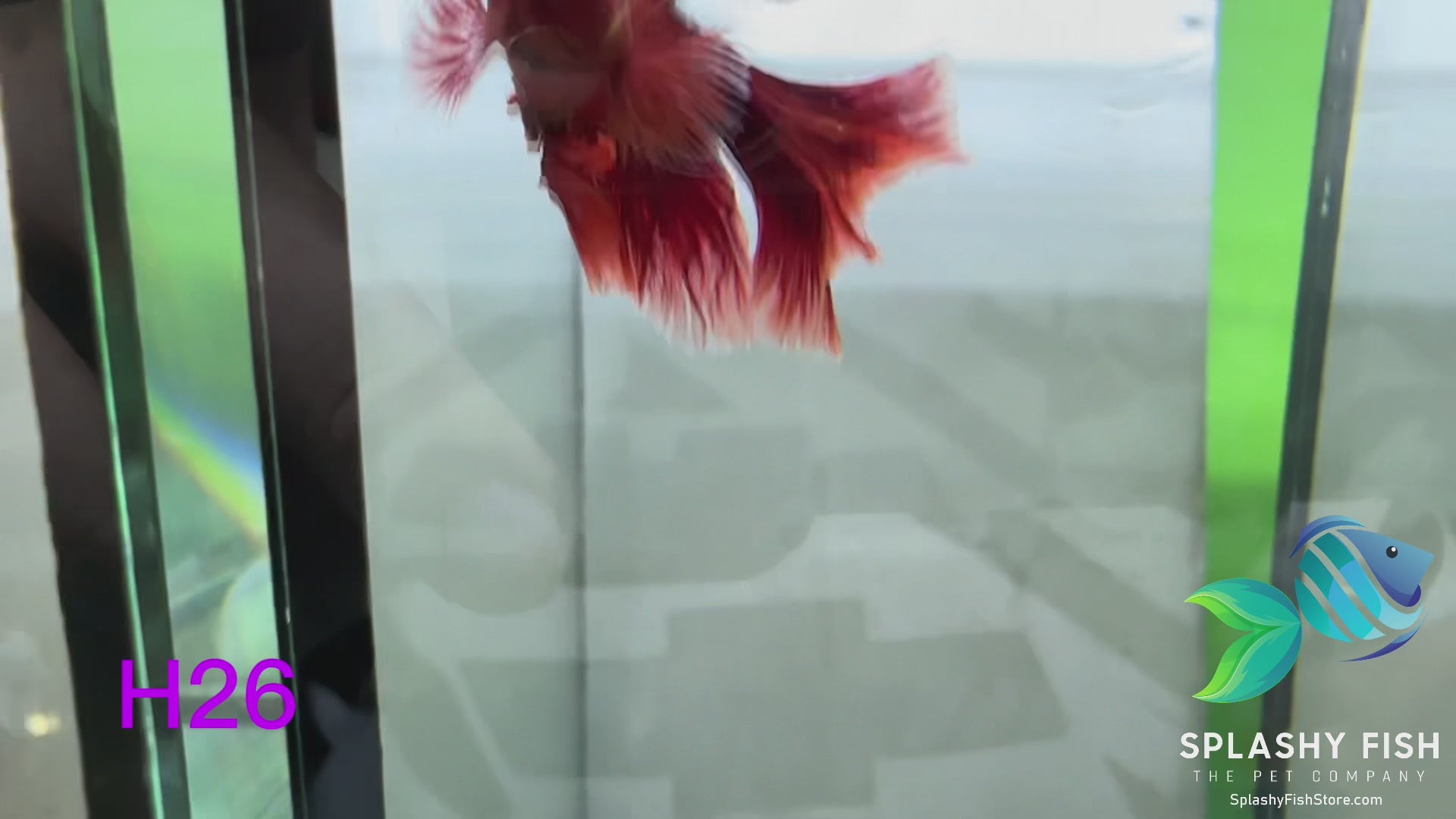
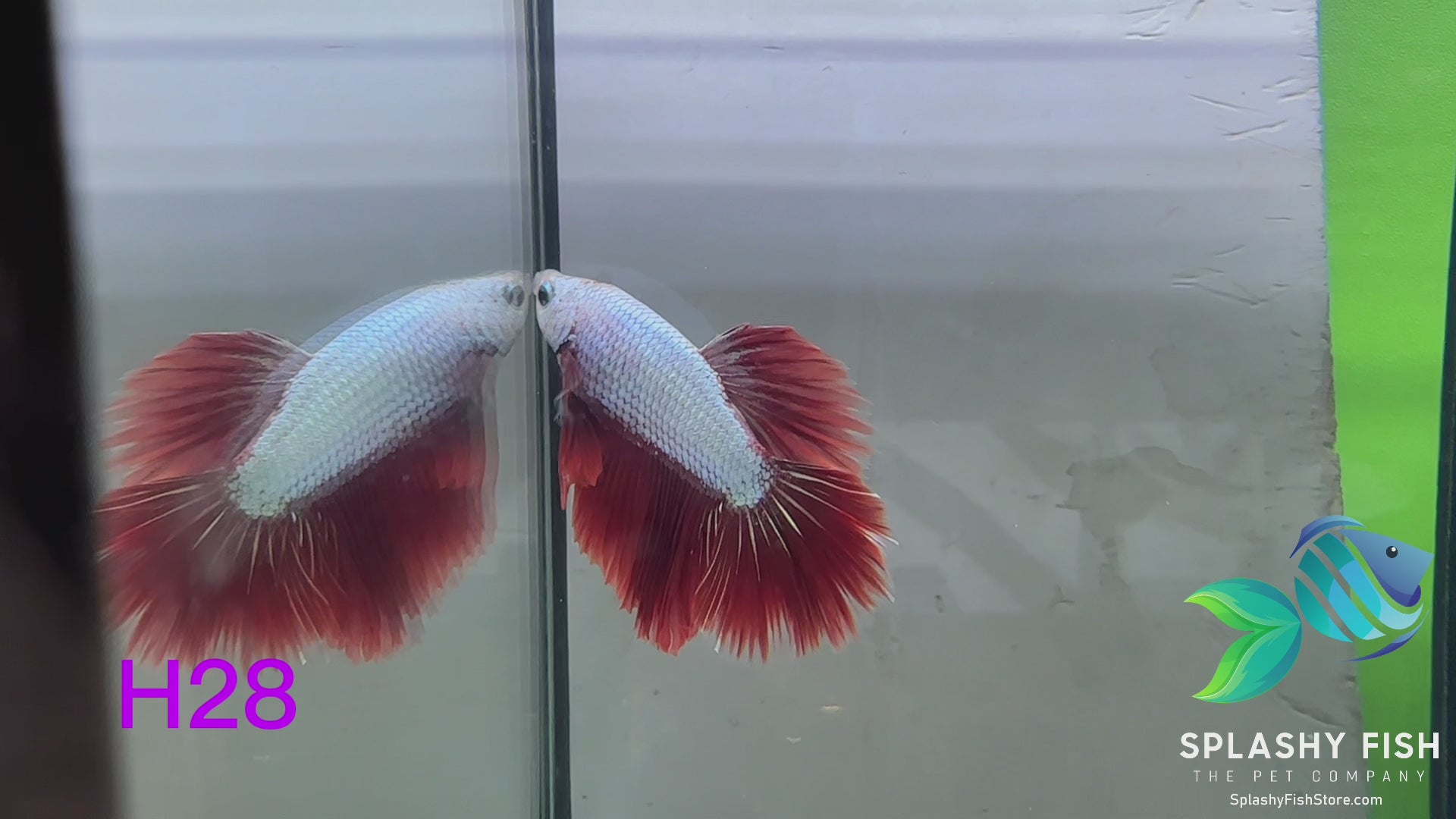
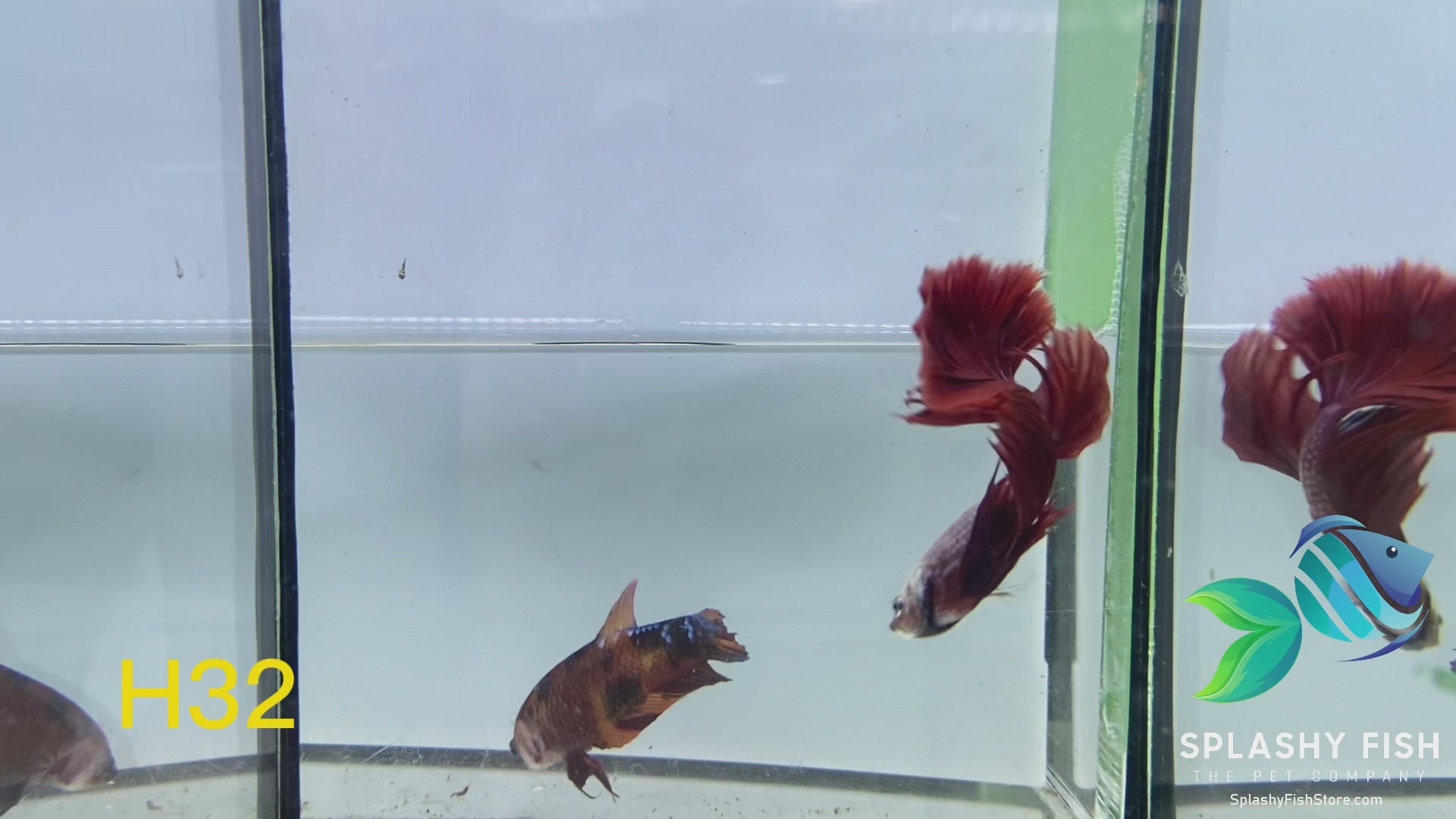
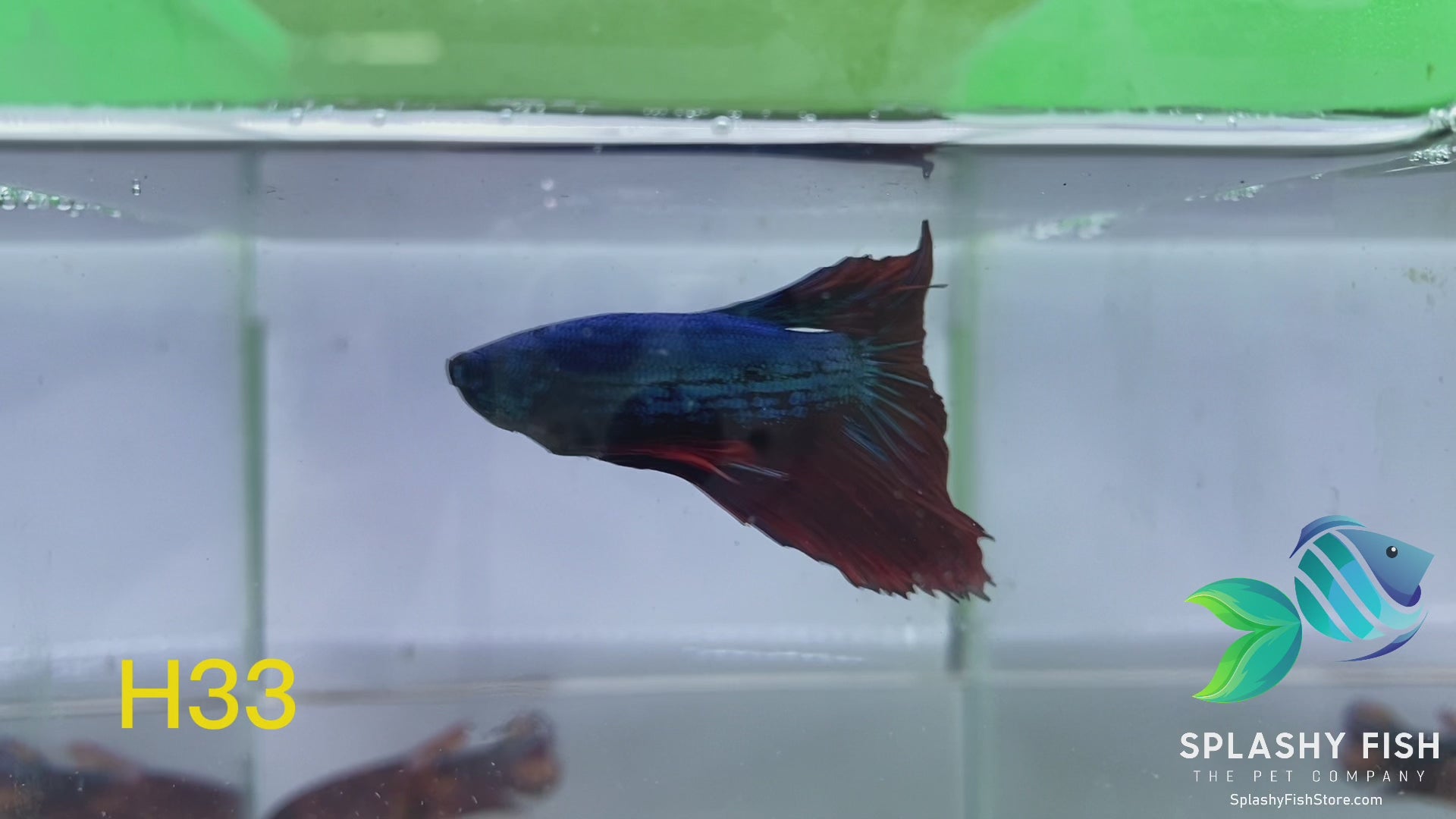
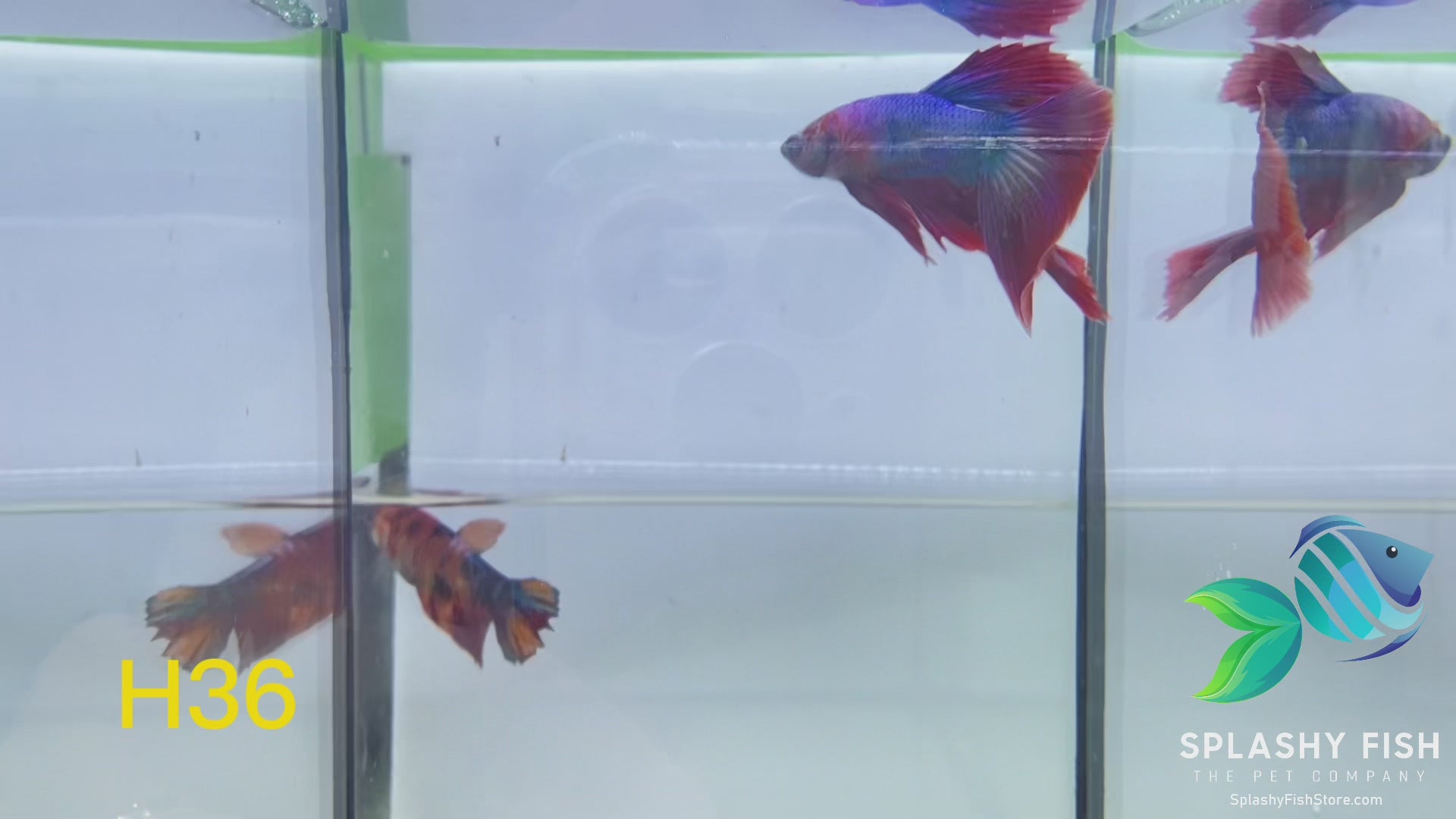
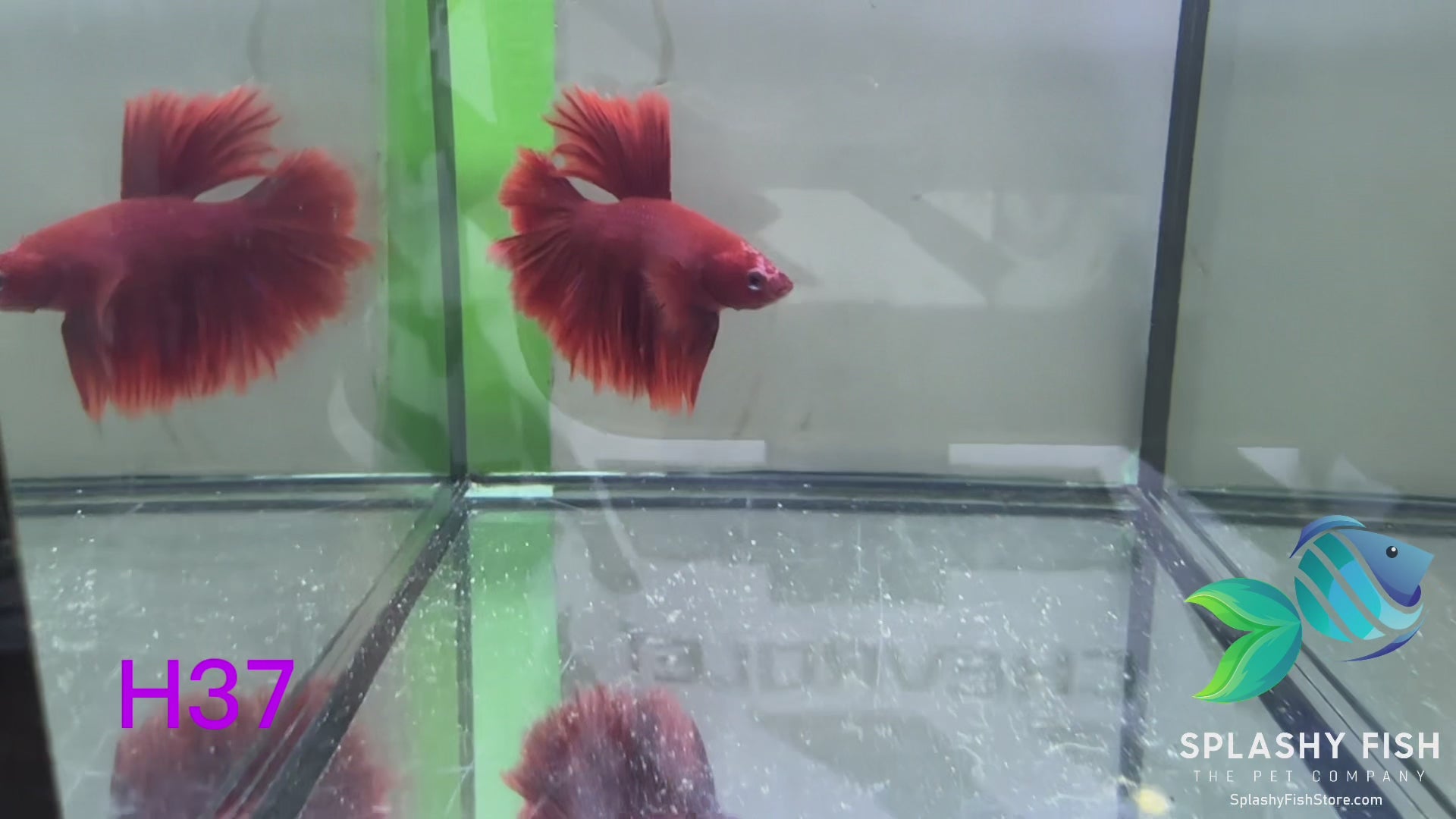
Discover the captivating charm of Male Betta Fish, also known as Siamese fighting fish. With their vibrant colors, flowing fins, and distinct personalities, these stunning aquatic creatures are the perfect addition to any aquarium tank. Male Betta Fish are available in an array of mesmerizing shades, from deep blues and reds to exotic patterns like marble and dragon scales. Known for their long, elegant fins, Male Bettas can display a dramatic flare, especially varieties like Halfmoon, Crowntail, and Plakat.
WYSIWYG (What You See Is What You Get) also known as Pick Your Betta, you get to choose what betta fish you like in each listing. These Male Betta Fish for sale in the listing are the exact ones you will be purchasing. All the bettas in this listing are handpicked and then go through 14 days of quarantine to be listed on Splashy Fish.
We take our time to record videos of each fish in this collection therefore you can confidently choose your favorite Siamese fighting fish from home. A Picture Paints A Thousand Words, But A Video Shows A Thousand Pictures therefore you can see more characteristics, movement, and coloration of the bettas you like. We hope that this will help you better select the right betta for your aquarium. Please make sure to click on the listing to see the fish moving and look at it closer.
At Splashy Fish fish store, we offer a curated selection of the finest male Betta fish for sale. Whether you're a beginner or an experienced aquarist, you'll find the perfect Betta to suit your tank. Pair your Betta with our selection of high-quality betta fish food, top-tier betta fish tanks, and an array of essential aquarium accessories to ensure your fish thrive in their new home. Explore our collection and elevate your aquarium with the stunning beauty of a male Betta fish.
Male Betta Fish Frequently Asked Questions FAQs
Can male betta fish live together?
No, male Betta fish cannot live together in the same tank. Male Bettas are highly territorial and will aggressively fight each other, often leading to injury or death. For this reason, it’s recommended to keep only one male Betta fish per tank unless using a divided setup where they cannot physically interact.
Are male betta fish aggressive?
Yes, male Betta fish are known for their aggression, especially towards other male Bettas and similar-looking fish. Their territorial nature causes them to defend their space vigorously. However, male Bettas can peacefully coexist with non-aggressive tank mates that don’t have flowing fins or resemble them in appearance.
How many male betta fish are in a tank?
Only one male Betta fish should be kept in a single tank unless it is divided with no physical contact. Keeping multiple male Bettas together can result in dangerous fights. If you're looking for tank mates, choose peaceful species like freshwater snails or bottom dwellers such as Kulhi Loach that won't provoke the Betta’s territorial instincts.
The Ultimate Male Betta Fish Care Guide
Welcome to the ultimate Male Betta Fish care guide! Whether you're a beginner or a seasoned fishkeeper, this step-by-step handbook will equip you with the knowledge and skills to ensure your Betta Fish, also known as Siamese fighting fish, is happy and healthy. Known for their vibrant colors and flowing fins, Male Betta Fish make excellent pets. However, providing proper care is essential to ensure they thrive in their environment. In this comprehensive guide, we'll explore everything from setting up the perfect tank to creating a balanced diet and maintaining optimal water conditions. From choosing the right tank size and accessories to understanding their unique behaviors, we'll cover it all. Whether you're a beginner or a seasoned fishkeeper, this guide will provide valuable insights tailored to your Betta's requirements. Join us as we dive into the world of Male Betta Fish care, unlocking the secrets to keeping your fish happy and healthy.
The Difference Between Male vs Female Betta Fish
Male Betta fish are often more vibrant and have longer, more elaborate fins than females. This is one reason why they are more commonly kept in home aquariums. Male Bettas are also more aggressive and territorial than their female counterparts, particularly towards other males. While Female Betta Fish can sometimes be housed together in a sorority, Male Bettas must be kept alone or with carefully chosen tank mates. Understanding the distinction between male and female Betta fish will help you provide the proper care they require.
Setting Up the Perfect Male Betta Fish Habitat
Creating a suitable environment for your Male Betta Fish is one of the most important steps in ensuring their long-term health and happiness. While Male Betta Fish are relatively hardy, they still require specific conditions to thrive.
1. Choosing the Right Tank Size
A widespread misconception is that Male Betta Fish can live happily in small bowls. This is false and can lead to stress, illness, and a shortened lifespan. While Bettas can survive in less-than-ideal conditions, they will not thrive unless given enough space. A minimum betta fish tank size of 5 gallons is recommended, though larger tanks provide better stability and more room for your Betta fish to swim. In a 5-gallon tank, it’s easier to maintain water quality and avoid drastic changes in water temperature. Additionally, it provides enough space to add live plants and other decor that can mimic the Betta’s natural environment.
2. Substrate Choices
Regarding the aquarium substrate for your Betta’s tank, options include aquarium gravel, aquarium sand, and planted substrates. Bettas don’t require a specific type, but it’s important to consider cleaning and aesthetics. Sand and fine gravel can help mimic natural environments and allow for easy waste removal. If you’re using live plants, a nutrient-rich substrate can help plants grow better, which in turn improves water quality and oxygenation for your Betta fighting fish.
3. Water Filtration and Oxygenation
While Male Betta Fish can survive in stagnant water due to their labyrinth organ, which allows them to breathe air from the surface, they still need a clean, well-filtered environment. Filtration removes harmful toxins like ammonia and nitrites, which can build up over time. However, Bettas dislike strong currents, so you’ll need an aquarium filter that provides gentle water movement. A sponge filter is often the best choice for Male Betta Fish tanks because it provides gentle filtration and can be paired with an air pump for added oxygenation without creating too much disturbance in the water.
4. Heating and Temperature Control
Male Betta Fish are tropical, meaning they thrive in warm water. The ideal water temperature for Male Betta Fish is between 82-85°F (28-30°C). Fluctuations in temperature can stress Bettas, making them more susceptible to disease, so a reliable aquarium heater is essential for maintaining a stable environment. Use an adjustable heater and a thermometer to ensure the water temperature stays consistent. Sudden temperature drops, especially in the winter, can lead to health issues like fin rot and lethargy.
5. Decorations and Plants
Fish decorations serve both aesthetic and practical purposes in a Betta tank. Bettas enjoy having hiding spots to reduce stress, so adding caves, aquarium rocks, or soft plants is beneficial. When choosing aquarium fish decor, avoid sharp objects that could tear their delicate fins.
Live aquatic plants like Anubias, Java Moss, Java Fern, and Vallisneria are perfect for Betta fish tanks. Not only do they provide cover and hiding places, but they also help improve water quality by absorbing nitrates.
Artificial plants made from silk are also a good alternative if live plants are too difficult to maintain. Avoid plastic plants, as they can have rough edges that may injure your Betta.
Feeding and Nutrition for Male Betta Fish
A healthy, well-balanced diet is vital for keeping your Male Betta Fish vibrant and full of energy. In their natural habitat, Bettas are carnivorous and feed on insects, larvae, and small crustaceans such as freshwater shrimps. Thus, their diet should be high in protein to support their overall health and immune system.
1. High-Quality Betta Pellets
Betta-specific pellets are an excellent staple food as they contain the right balance of protein and other nutrients. When choosing pellets, opt for brands with high protein content (at least 30-40%). Pellets that float are ideal, as Bettas tend to eat at the surface of the water. Avoid overfeeding your Betta, as leftover food can rot and contaminate the water, leading to increased ammonia levels. Feed only what your Betta can consume in 2-3 minutes.
2. Live, Frozen, and Freeze-Dried Foods
In addition to pellets, Male Betta Fish benefit from live, frozen food, or freeze-dried foods, such as brine shrimp, bloodworms, daphnia, and mosquito larvae. The betta fish food mimics their natural diet and provides a good source of protein and enrichment. Live foods can help stimulate your Betta’s natural hunting instincts, but be cautious as uneaten food can spoil quickly, requiring more frequent tank cleaning.
3. Feeding Schedule
A consistent feeding schedule is important to avoid overfeeding or underfeeding. Bettas should be fed once or twice a day, with small portions that they can eat within a few minutes. As mentioned earlier, overfeeding can lead to obesity and water quality issues. It’s also a good idea to fast your Betta once a week. Fasting helps prevent constipation and digestive issues that can occur due to overfeeding or improper digestion of food.
Maintaining the Water Quality in Your Male Betta FishTank
Water quality is one of the most important factors in maintaining a healthy Male Betta Fish. Poor water conditions can lead to stress, illness, and even death. Here are the key components to maintaining a healthy aquatic environment for your Betta fish.
1. Cycling the Tank
Before introducing your Male Betta Fish to its new home, it’s crucial to cycle the tank. The nitrogen cycle is the process by which beneficial bacteria break down harmful toxins like ammonia and nitrites into less harmful nitrates. Without cycling, these toxins can quickly reach lethal levels.
To cycle the fish tank, set up the filter, substrate, and decorations, and add an ammonia source like fish food or a small pinch of pure ammonia. Monitor ammonia, nitrite, and nitrate levels with a test kit. This process can take 2-4 weeks, but once complete, your Betta will have a stable and safe environment.
2. Regular Water Changes
Water changes are essential to maintain water quality and remove harmful toxins. For a 5-gallon tank, perform a 25-30% water change every week. This helps keep ammonia, nitrite, and nitrate levels in check while ensuring the water remains clear and free of waste. Use a gravel vacuum to remove debris from the substrate during water changes. It’s also important to treat tap water with a water conditioner to remove harmful chlorine and chloramines.
3. Monitoring pH and Water Parameters
Male Betta Fish prefer slightly acidic to neutral water, with a pH between 6.5 and 7.5. While they can tolerate minor fluctuations, sudden changes can stress the fish. Additionally, water hardness should be on the softer side, with a dGH (degree of general hardness) between 3-5. Keep a water test kit on hand to monitor pH, ammonia, nitrite, and nitrate levels regularly. Any spike in ammonia or nitrite levels can indicate a problem with filtration or overfeeding.
Understanding Male Betta Fish Behavior and Communication
Male Bettas are known for their territorial and aggressive behavior, but they also display a wide range of other interesting behaviors that are important to understand as a responsible fishkeeper.
1. Flaring
One of the most iconic Betta behaviors is flaring, where the fish spreads its fins and gill covers to appear larger and more intimidating. Bettas typically flare when they feel threatened, see their reflection, or encounter another Betta. While occasional flaring is normal and even healthy, frequent or prolonged flaring can cause stress. If your Betta is flaring at its reflection, adjust the lighting or place a background on the aquarium tank to reduce reflections.
2. Bubble Nest Building
Male Bettas create bubble nests at the water's surface, especially when they are happy and ready to breed. These bubble nests consist of tiny air bubbles covered in mucus, and they are where the male will place the fertilized eggs after breeding. While bubble nest building is a sign of a healthy Betta, not all males will build nests regularly, especially if they are not in breeding mode. Don’t be alarmed if your Betta does not build nests frequently.
3. Resting at the Surface or on Plants
Bettas often rest near the water’s surface or on the broad leaves of plants. Due to their labyrinth organ, they can breathe air from the surface, so it’s common to see them hanging out near the top of the tank. Bettas may also lie down on the substrate or rest in a corner of the tank when they are sleeping. As long as they remain active during the day and show no signs of illness, this behavior is perfectly normal.
Preventing and Treating Common Male Betta Fish Diseases
Betta fish are susceptible to several common diseases, especially when exposed to poor water conditions, stress, or improper nutrition. Being able to recognize and treat these conditions early can save your fish's life.
1. Fin Rot
Fin rot is a bacterial infection that causes the edges of a Betta’s fins to become ragged and discolored. It’s often a result of poor water quality or injuries sustained from sharp tank decorations.
Treatment: Perform a water change and clean the tank. Use an antibacterial treatment or aquarium salt to help fight the infection. Remove any sharp objects from the tank that may have caused injury.
2. Ich (White Spot Disease)
Ich is caused by a parasite that appears as tiny white spots on the fish's body and fins. It can cause scratching against tank objects, lethargy, and loss of appetite.
Treatment: Raise the tank temperature to 82-85°F and use a parasite treatment, following the instructions carefully. Be sure to quarantine infected fish if you have tank mates.
3. Swim Bladder Disease
Swim bladder disease affects a Betta’s ability to control buoyancy, causing them to float uncontrollably or sink to the bottom. It’s often related to overfeeding or constipation.
Treatment: Fast the fish for 24-48 hours, then offer a small piece of a cooked, peeled pea to help with digestion.
Male Betta Fish Tank Mates and Compatibility
Male Betta fish are solitary and territorial by nature, and choosing the right tank mates requires careful planning. While some Bettas may tolerate certain species, others may show aggression. Here are some tips for choosing compatible tank mates.
1. Avoid Other Male Bettas
Never house two male Bettas together, as they will almost always fight to the death. Even females should be kept separate unless you are attempting to breed them under controlled conditions.
2. Compatible Tank Mates
If you want to add other freshwater fish to your Betta tank, choose peaceful species that won't nip at their fins or provoke aggression. Suitable tank mates include:
- Corydoras Catfish: These bottom-dwellers are peaceful and won't compete for territory.
- Kuhli Loaches: Another bottom-dwelling species that tends to stay out of the Betta’s way.
- Mystery Snails: Freshwater snails make great companions for Bettas and help keep the tank clean.
When adding tank mates, ensure that the tank is at least 10 gallons to provide enough space for everyone. Monitor your Betta’s behavior closely, as some may not tolerate any tank mates.
Breeding Male Betta Fish: Tips and Considerations
Breeding Betta fish can be a rewarding but challenging process. It requires a separate breeding tank and careful attention to water parameters and the health of both fish.
1. Conditioning the Fish
Before breeding, both the male and female Betta should be conditioned with high-protein foods like live or frozen brine shrimp and bloodworms. This helps ensure they are healthy and ready to breed.
2. Setting Up the Breeding Tank
The breeding tank should be at least 10 gallons with plenty of hiding spots for the female. Add a few floating plants or an Indian almond leaf to encourage the male to build a bubble nest. The water should be warm (78-80°F) with a gentle filter or sponge filter.
3. Introducing the Pair
When introducing the female, keep her in a separate container within the breeding tank to allow the male to see her without direct contact. Once the male builds a bubble nest and shows courtship behavior, you can release the female. After spawning, remove the female immediately to avoid aggression. The male will care for the eggs and fry until they are free-swimming.
Enhancing the Aesthetics of Your Male Betta Fish Tank
A well-decorated Betta tank not only enhances the aesthetic appeal but also provides your live fish with a stimulating environment. Here are some tips to create a visually pleasing and functional habitat for your Betta.
1. Natural Decorations
Live plants like Anubias plants, Fern plants, and Cryptocoryne create a beautiful, natural look while providing hiding spots and improving water quality. Driftwood and smooth rocks can add a naturalistic feel to the tank.
2. Aquascaping
Aquascaping involves creating a harmonious underwater landscape with freshwater plants, rocks, and wood. This can be as simple or elaborate as you like, but always ensure there is plenty of open space for your Betta to swim. Use a mix of tall and short plants to create depth and interest. Floating plants like Salvinia or Red Root Floater provide cover and help reduce stress by diffusing light.
Conclusion
Male Betta fish are resilient and stunning creatures that can thrive with proper care. By setting up an appropriate environment, providing a balanced diet, maintaining water quality, and understanding their behaviors, you can ensure your Betta fish remains healthy and happy. With the right attention and maintenance, your Betta can live a long and vibrant life.
Discover the Grades:
-
Collector Grade Betta Fish: These fish embody the epitome of our collection, showcasing impeccable finnage, vivid coloration, and flawless form. Through a meticulous selection process, we handpick approximately 1 out of every 5,000 betta fish to attain this exceptional grade that meet Splashy Fish's exacting standards. This is the most expensive betta fish grade that we have that is consider rare bettas for sale.
-
Deluxe Grade Betta Fish: Exemplary specimens with distinctive characteristics, ideally suited for individuals seeking an extraordinary addition to their aquarium. At Splashy Fish aquarium store, we meticulously hand-select each betta fish, adhering to stringent criteria to guarantee the fish's body, colors, shape, and fins are aesthetically pleasing and in optimal health. Typically, from a batch of 300 baby betta fish, only approximately 1 to 5 meet Splashy Fish's exacting standards.
-
Premium Grade Betta Fish: Healthy and active Bettas with beautiful colors and unique patterns, perfect for any hobbyist. Typically, a cohort of 300 juvenile Betta fish will yield approximately 12 to 10 specimen that adhere to Splashy Fish's stringent criteria for Premium Grade.
- B Grade Betta Fish: Behold the extraordinary beauty of this magnificent Betta fish! As one of the top 20% of Betta fish, its vibrant colors and elegant fins will captivate your senses. Unlike the ordinary Betta fish found at this price in betta Petco, this exceptional specimen is a rare and highly sought-after prize. Elevate your freshwater aquarium with this extraordinary Betta fish, and experience the joy of owning a truly unique and mesmerizing aquatic masterpiece.
Explore the Varieties:
-
Koi Galaxy: These mesmerizing betta koi fish boast captivating Galaxy patterns reminiscent of a starry night sky.
-
Koi Nemo Galaxy: A stunning combination of betta Koi patterns and vibrant Galaxy coloration, creating an eye-catching spectacle.
-
Dumbo Betta: The signature oversized pectoral fins give these Bettas their endearing Dumbo-like appearance.
-
Giant Betta Fish: also known as the King Betta Fish, is a large and captivating species of betta fish known for its magnificent size and striking appearance. They are one of biggest giant betta for sale which can grow up to 3 inch in size
-
Halfmoon Betta Fish: Elegant Bettas with caudal fins that extend 180 degrees, creating a graceful half-moon shape.
-
Halfmoon Plakat Betta Fish: A captivating combination of the Halfmoon tail type with the shorter fins of a Plakat Betta.
-
Crowntail Betta Fish: These Bettas boast unique, spiky fin rays that resemble a crown, adding a touch of regality.
-
WYSIWYG Betta Fish: What You See Is What You Get – At splashy fish, we've taken the time to record individual videos of our beautiful bettas. This way, you can choose the exact fish you want, just like if you were buying it in a store. No more surprises when you get your new betta home!
Explore Betta Sex:
- Male betta fish: also known as Siamese fighting fish, captivate hobbyists with their vibrant colors, flowing fins, and unique personalities. Originally found in the rice paddies and slow-moving waters of Thailand, these small but feisty fish have become popular freshwater aquarium pets due to their beauty and hardiness. Male beta fish are known for their territorial behavior and often engage in elaborate displays to assert dominance. Their iridescent scales shimmer in the light, showcasing a spectrum of colors ranging from deep blues, greens, and reds to metallic hues. Their long, flowing fins add an elegant touch to their overall appearance. While male bettas can be aggressive towards other males, they can thrive in a community aquarium if provided with sufficient space and hiding places. Their intelligence makes them interactive pets, and they often recognize their owners and respond to their presence.:
- Female betta fish: known for their less vibrant colors, are a captivating addition to any aquarium. While often overshadowed by their male counterparts, female bettas have their own unique charm and personality. They are typically less aggressive than males and can be kept together in groups, creating a harmonious and visually stunning betta sorority tank. Female bettas come in a wide range of colors and patterns, making it easy to find one that fits your personal style. This aquarium fish are also relatively easy to care for, making them an excellent choice for beginner and experienced aquarists alike.























